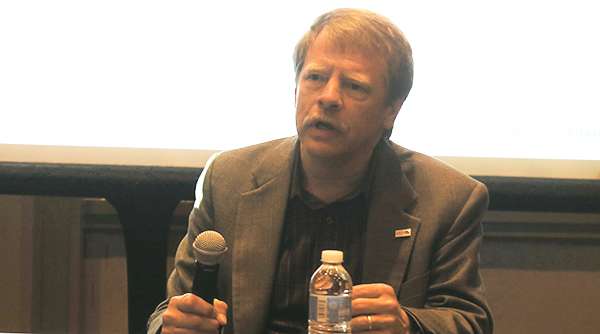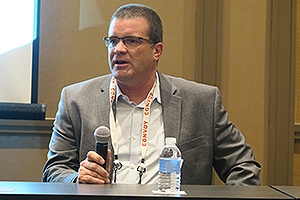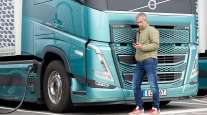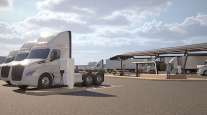Staff Reporter
Autonomous, Electric Infrastructure Will Expand With Demand, Experts Say

[Stay on top of transportation news: Get TTNews in your inbox.]
DALLAS — Infrastructure required for autonomous and electric vehicles will follow demand for such products, according to technology experts.
Appropriate infrastructure, such as charging stations, can be a challenge for cars and trucks that need to travel to places that lack charging sites. Rick Mihelic, director of future technologies studies at the North American Council for Freight Efficiency, suggested that such infrastructure will bloom as the technologies develop. Mihelic, whose work has focused on EVs for the past couple of years, spoke on a panel at the Women In Trucking Association’s conference Oct. 1.
For example, Mihelic said that companies created and deployed better cellphone infrastructure when more and more people started buying cellphones. Similarly, jet planes improved as they replaced trains as the primary method for moving people.
“I think that’s what you’re going to find here,” Mihelic said. “If the market desires them, the capital investment for the infrastructure is going to be there.”
Paul Schlegel, senior vice president of Starsky Robotics, agreed with Mihelic and indicated the presence of autonomous technologies on roads will grow gradually. Starsky is an autonomous truck company.
Schlegel said autonomous technologies in trucks won’t cause a cataclysmic change. Rather, he indicated they will bring about changes in specific areas over time. He said autonomous technology could be especially effective for shorter, fixed dispatches. For example, Starsky operates a regular run between Houston and Dallas, which is about 250 miles. Schlegel suggested that, in the future, that trip may be well-suited for a driverless run.

Schlegel by Eleanor Lamb/Transport Topics
“It’s going to disrupt things over time, and we’re not even going to necessarily see it,” Schlegel said. “It’s going to happen in small lanes [and] in small areas.”
Some freight haulers have been apprehensive about autonomous vehicle technologies because they foster the perception that trucks soon may be driving themselves. Schlegel noted that human drivers are important and will remain key for the parts of autonomous dispatches that involve exiting the highway and navigating to the customer’s facility. He compared autonomous trucks with airplanes, which require human intervention for take-offs and landings.
Mihelic said one challenge has been dispelling misconceptions about electrification’s implications on the industry. For example, he said some “zealots” say batteries mean the end of diesel. Others say batteries can’t work as a long-term solution, partly because they’re heavy.
Mihelic said people should acknowledge that the industry is in the “messy middle,” wrangling with multiple technologies and multiple alternative fuel options.
“The big issue right now, with all these big technologies, everybody wants to jump to the end of the book,” Mihelic said. “That’s probably not the world that we’re going to.”
Schlegel said state government agencies have been particularly active in developing rules regarding AV testing. For example, Louisiana’s regulations for autonomous commercial motor vehicles took effect Aug. 1. The law, signed by Gov. John Bel Edwards in June, established operational parameters and reporting requirements for autonomous trucks and their drivers.
Louisiana joined 28 states and the District of Columbia as jurisdictions that have enacted autonomous vehicle legislation, according to the National Conference of State Legislatures.
“We work directly with state and local agencies to ensure they know what testing is going on,” Schlegel said. “The states are very willing to work with us to put in laws and regulations that are safe.”
Want more news? Listen to today's daily briefing:




